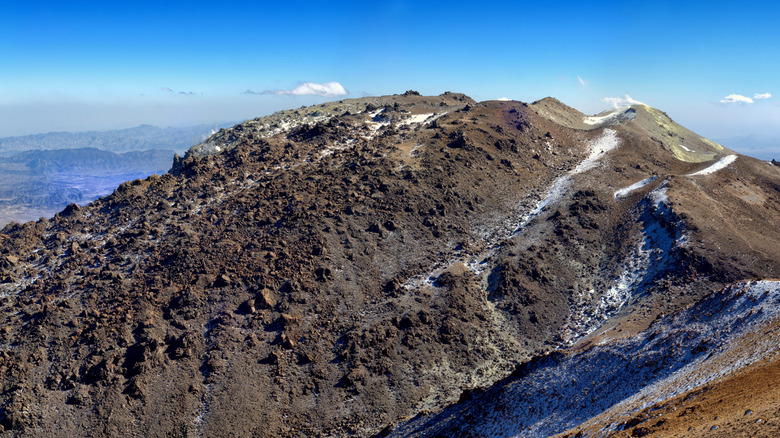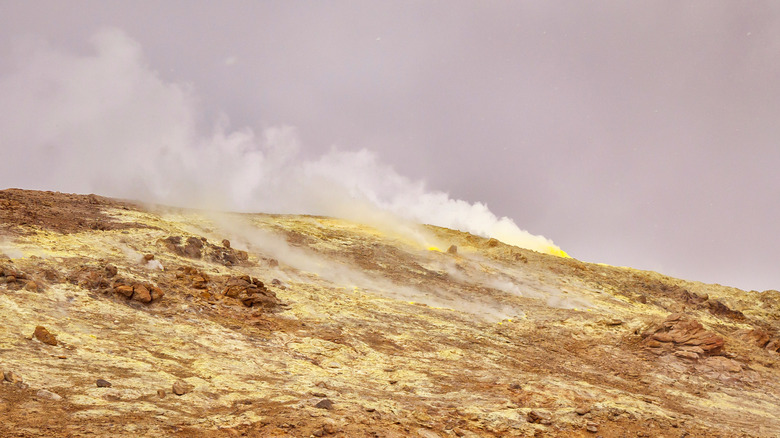After Over 700,000 Years Without Activity, This Volcano Has Awakened
In southeastern Iran, about 31 miles from the closest city, the volcano known as Taftan is stirring. Though Taftan has no recorded history of confirmed eruptions, recent research has revealed that the volcano has risen by 3.5 inches over 10 months. Scientists are worried that this signals a buildup of pressure that might end up being released violently. It isn't the only volcano waking up, as a dormant volcano in Alaska has recently started rumbling.
Using satellite data, a team of researchers discovered Taftan's rise from July 2023 through May 2024. It has stayed at that height since then, not losing the 3.5 inches it gained. No external factors were found to have caused this rise, leading researchers to conclude it is a buildup of internal pressure. Taftan is a stratovolcano, made of hardened lava and ash, with magma resting two miles beneath it.
The discovery of this activity was published in Geophysical Research Letters in October 2025, and brought together a team of researchers from China, Germany, and Spain. The publication serves as a warning to Iran. Don't ignore the waking Taftan.
The research done into the Taftan volcano
The Taftan volcano is part of a mountain range where the Arabian and Eurasian Plates meet. Taftan is the only peak in the area that consistently gives off steam and gas. It's also remote, and so data and consistent monitoring of the volcano have been limited. To overcome this challenge, the research team developed a new filtering technique that cleans up satellite data regarding geological movement referred to as InSAR (interferometric synthetic aperture radar). While applying this InSAR cleanup technique to Taftan, they found evidence of its increased activity.
The InSAR data revealed Taftan's peak rose 3.5 inches in less than a year. Using their filtering techniques, the researchers were able to clean up the data by 50% to filter out errors and isolate real volcanic movement. This allowed them to pinpoint exactly when the rise started and stopped and where it was centered around. Specifically, it was around three steam vents on the volcano's summit.
Additionally, they found the eastern side of the summit moved later and stopped sooner than the western side. They compared this data to similar volcanic movement in Italy and Japan (Japan even has a city built inside a volcano). They didn't find a history of this type of movement causing eruptions, however, it is clear the volcano's movement is caused by internal disturbances.
Is the Taftan volcano going to erupt soon?
The researchers have a couple theories as to what caused this movement and whether or not it poses a danger to the surrounding area. The researchers believe Taftan's hydrothermal system that releases gas and steam is the culprit and not the magma itself due to the volcano's movement not being as deep as the magma level.
The first theory involves changes in the volcano's hydrothermal system. Trapped steam and gas built up pressure and created new escape pathways. The second theory is that a small batch of magma created extra gases that added pressure to the existing hydrothermal system. These theories are supported in the observations of increased emission releases during the uprising time that subsided afterward.
Despite the release of steam, the volcano has not settled back down to its previous position. If it was to erupt, the lava flow — like the one that destroyed Iceland's Blue Lagoon — is not the biggest concern of the researchers. The concern is explosions from steam pressure. Even with the closest city being miles away, such gas explosions can carry long distances, resulting in damage to crops and burning eyes and lungs of nearby inhabitants. While the research team doesn't want to cause any panic, it does want the local Iranian authorities to be aware of the potential for danger and ensure Taftan is more closely monitored for the future.


